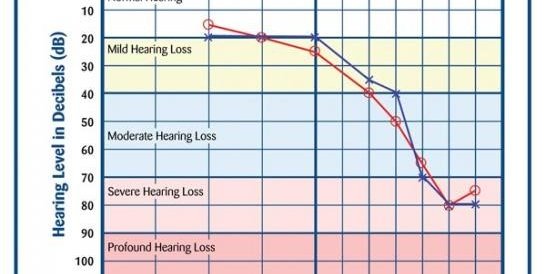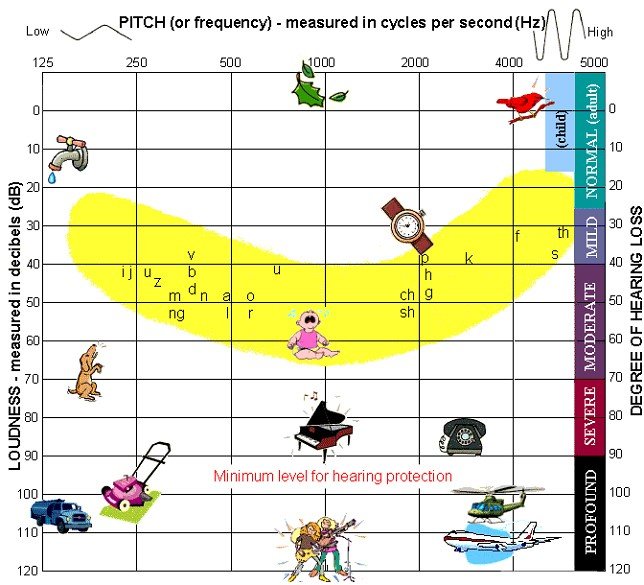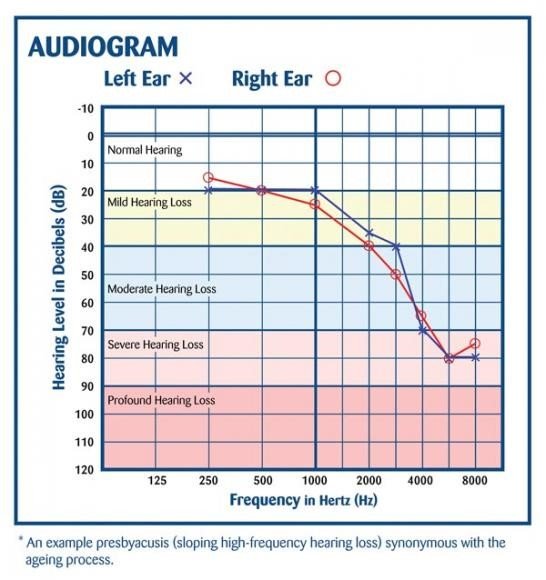Hearing Loss - Understanding the Audiogram
May 26, 2017

An audiogram is the basic diagnostic test for hearing loss. What information is contained in the audiogram and how is it used?
An audiogram is a graphical representation of one’s sense of hearing. A hearing test, which contains certain exercises performed by a hearing healthcare professional, is administered to an individual. The results from those exercises are then placed into an audiogram so that the professional can determine if a hearing loss is present, and how severe it may be.
The audiogram represents the ability to hear certain levels of sound at various frequencies. For instance, one person may be able to hear a deep tone, like a bass guitar note, at one sound level, but not be able to hear a high pitch tone, like a bird chirp, at the same sound level. During the hearing test, the results are recorded onto an audiogram by Red Os for the right ear, and Blue Xs for the left ear.
The professional administering the test begins the test at a 0dB level. This does not mean that there is no sound at all, it just means that it is the softest sound that a person with normal hearing ability would be able to detect. The professional increases the volume until the person sitting for the test can first hear the sound. Then, the professional records the dB (Volume level) and Hz (Frequency/Pitch) where the person sitting for the test heard the sound, on the audiogram. Normal hearing is when the softest sounds are heard between -10dB and 20dB.
Volume and pitch of typical everyday sounds

This is a sample audiogram

MEDPlus Health Solutions is WSIA's preferred vendor for hearing loss services and aids. Members are encouraged to contact MEDPlus's Gail Pearson to learn more about this member benefit and how MEDPlus can assist on hearing loss claims.